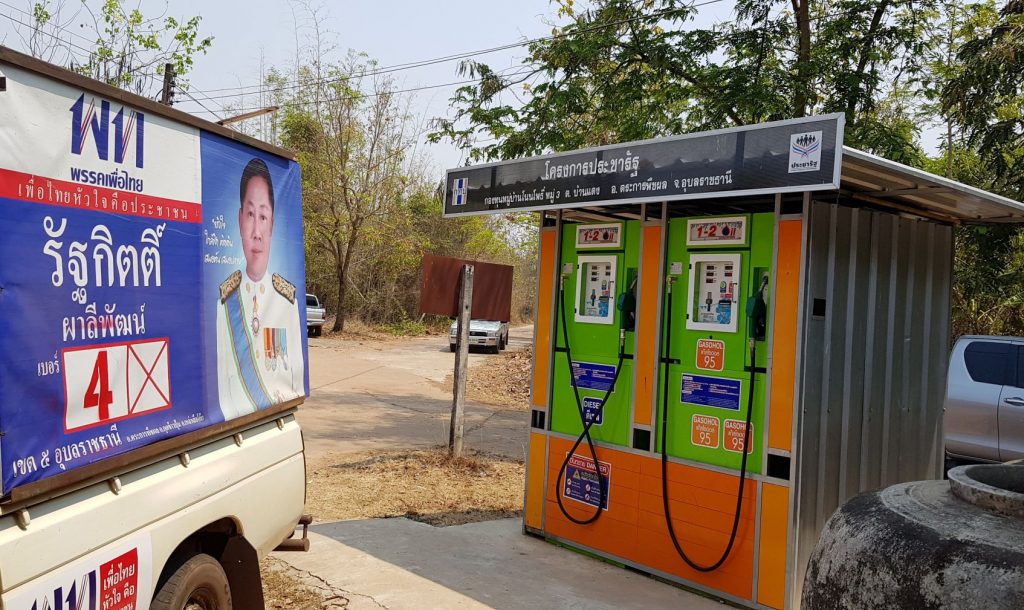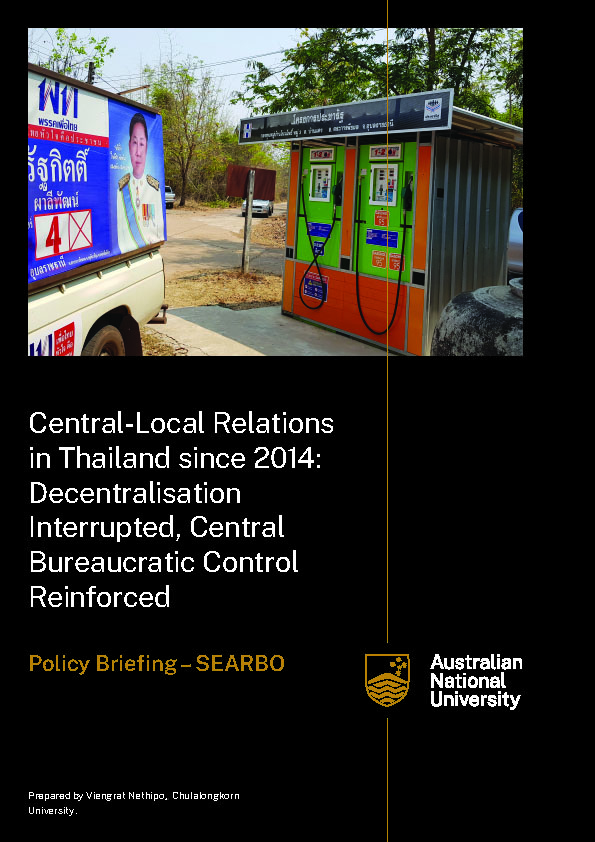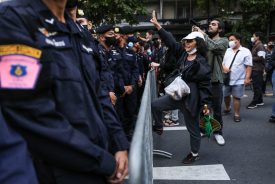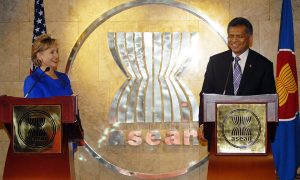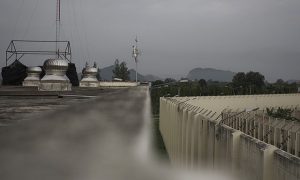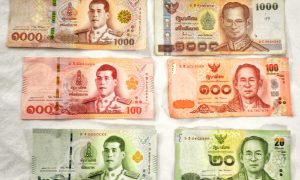The Thai language versions of this article and report are now available by following this link.
The 2014 coup d’état against the elected Yingluck Shinawatra’s government, staged by a military group calling themselves the National Council for Peace and Order (NCPO), can be viewed as a continuation of the 2006 coup d’état that deposed Yingluck’s elder brother, Thaksin Shinawatra. In each case, a central goal was to disrupt the system of electoral politics that was based on the provisions of the 1997 constitution. This system was viewed as a major threat, as it had empowered politicians and political parties at the expense of the bureaucracy. The 2014 coup also led to major disruption at the subnational level, as it interrupted the mechanisms of local democracy that had arisen from innovations incorporated into the 1997 constitution. These provisions not only challenged the historical territorial dominance of the Ministry of Interior (MOI), but had more generally become an important foundation for Thailand’s democratic consolidation. In sum, the 2014 coup undercut the spirit of the 1997 reform.
Click on the cover image below to download the full policy brief.
My report, available to download by clicking on the image above, examines changes in central-local relations under the NCPO military regime. While many observers of Southeast Asian politics would be familiar with how the 2014 coup undermined national-level democratic institutions—from the constitution to elections to representative structures—it is also important to understand how the regime suspended local elections and tried to assert control over the mechanisms of local democracy that had emerged since 1997 (as part of what as known as the system of Local Administration, centred around what are called Local Administrative Organisations, or LAOs). This report examines changes in the power relations at three distinct levels: between the central bureaucracy and the Local Administration, between bureaucrats and politicians, and between politicians and people. In order to understand these processes of political change, I argue, analysis needs to consider dynamics not only within formal institutions but also across the informal networks that extend from NCPO rulers at the top of the system through intermediary levels (politicians, bureaucrats, and local leaders) and downward to the people at the grassroots.
The analysis is divided into four parts. The first section demonstrates how the NCPO centralised its power after 2014, leading to discontinuity in the processes of local democracy. Second, I trace the mechanisms of control deployed by the NCPO at the subnational level, from the promulgation of the 2017 constitution up to the general election held in March 2019, as they manipulated political networks at various levels to support of their electoral victory. Thirdly, the Royal Project is discussed as an illustration of how a project prioritised by the central bureaucracy could introduce new imperatives into the chain of command linking the bureaucracy to the democratically elected LAOs. The article closes on a more hopeful note, exploring the important role of LAOs in responding to the crisis of the COVID-19 pandemic.
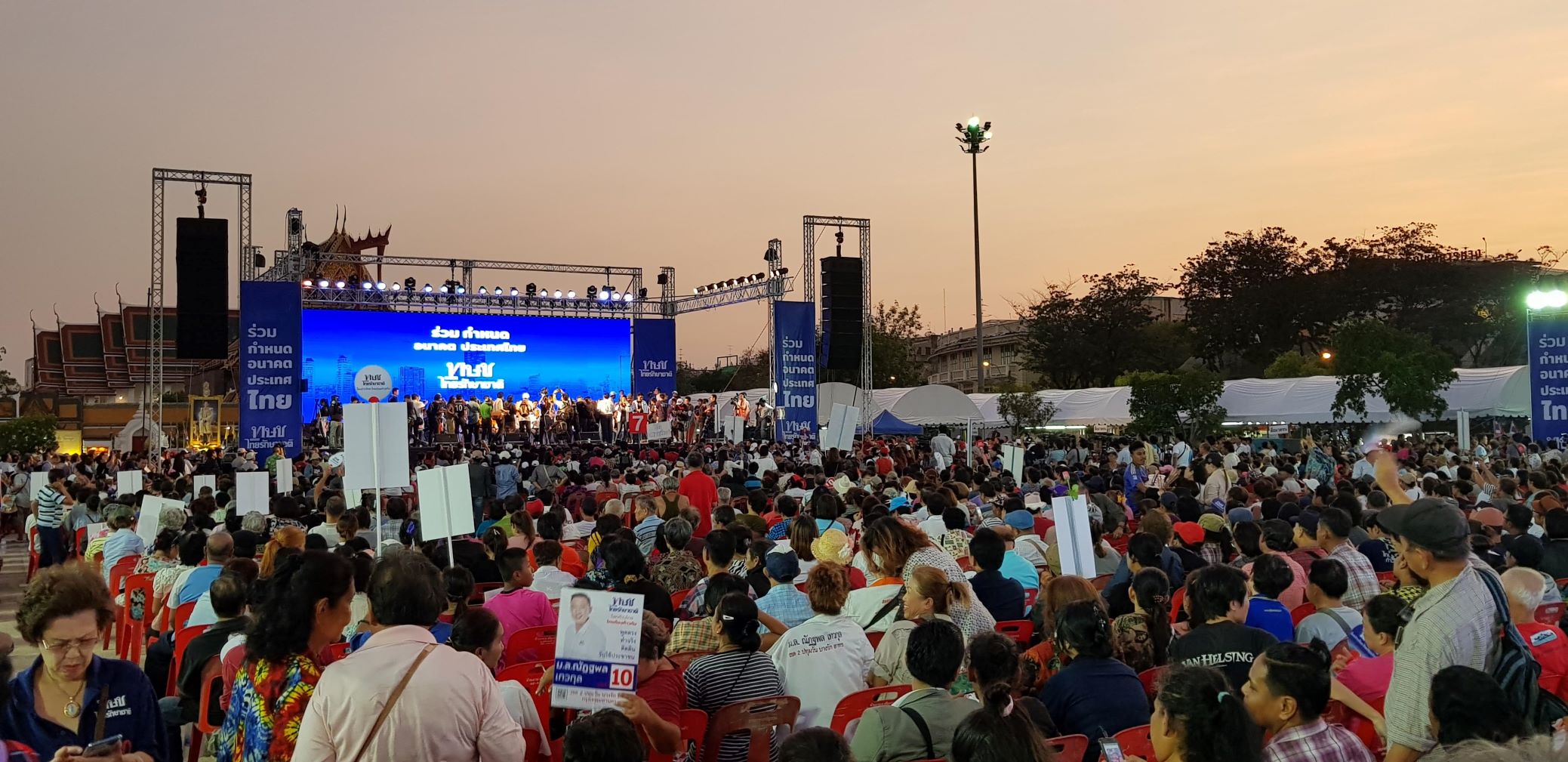
An urban election rally in 2019. Image supplied by the author.
From day one, the NCPO exerted its power through the Provincial Administration, the traditional territorial structures of the MOI, a central bureaucracy through which any command from Bangkok can be communicated all the way down to the village level. Through the extensive reach of the Provincial Administration into subnational levels, the NCPO was able to keep track of the resistance, track down opponents, and enforce its commands at the local level. Moreover, the NCPO interrupted local democracy by ordering the indefinite suspension of all local elections.
To tighten its power, the NCPO also took advantage of a rarely used organisation under the control of the Ministry of Interior: the Damrong Darma Centres. These centres can receive complaints from any source, and ultilise their powers to mediate and to summon relevant people for the purpose of investigation. These tools have been used by the NCPO to suppress their political opponents, especially the community leaders and politicians who were associated with the Thaksin and Yingluck Shinawatra governments. Second, as part of an effort to gain control over the LAOs, the State Audit Office investigates the budgets of various projects carried out by the local authorities. Third, the NCPO also has utilised the power of the National Anti-Corruption Commission to investigate local politicians who were allegedly involved in corruption. These mechanisms forced local politicians to yield to the power of NCPO, switch political allegiances, or at least to refrain from conducting political activities.
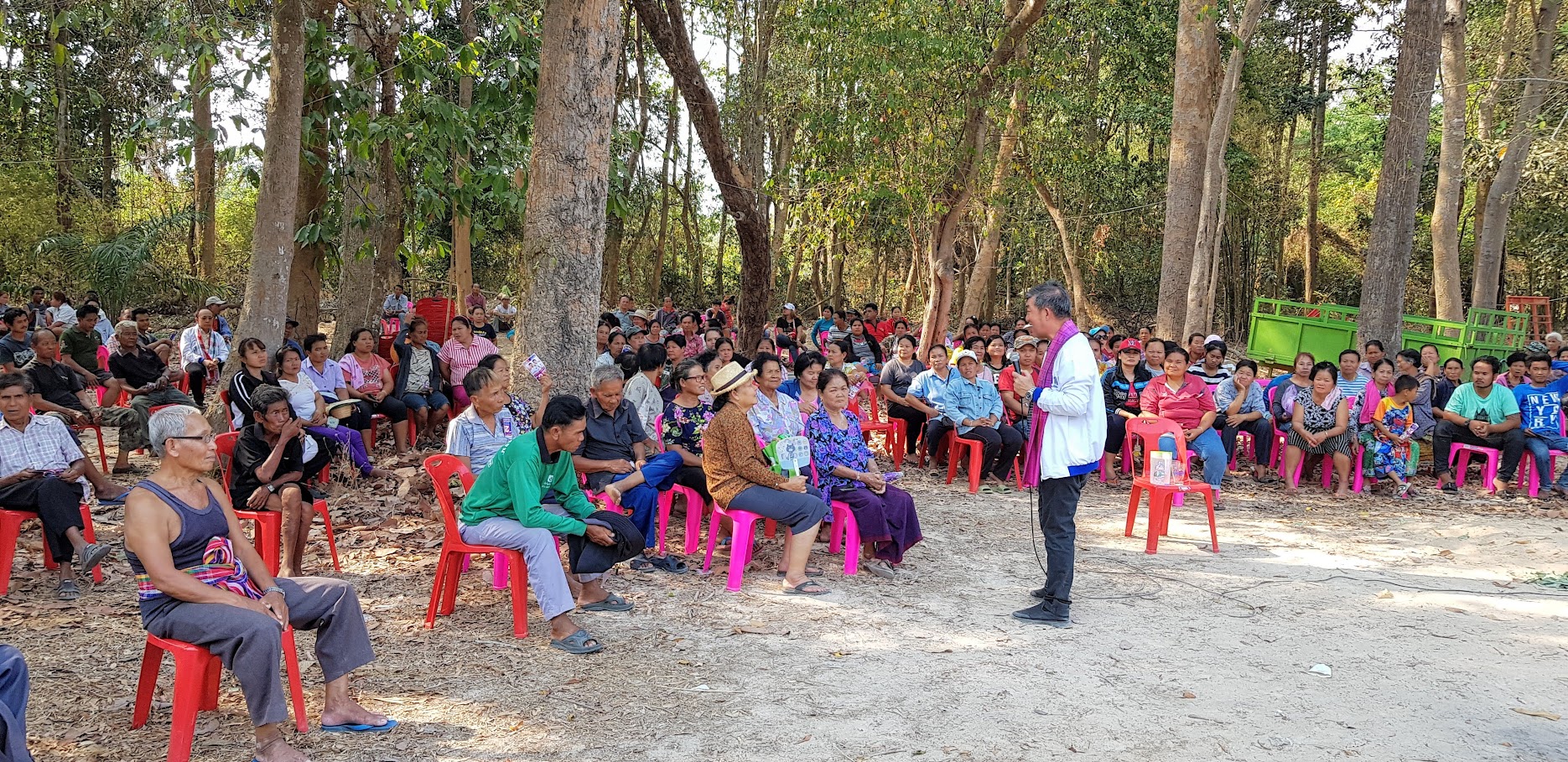
An election rally organized at a community forest. Image supplied by the author.
Also as part of its efforts to consolidate power, the NCPO dipped deep into the national budget to fund government projects under the umbrella of the Pracharath (people-state) scheme. Launched in September 2015, the scheme was promoted as an economic stimulus with the goal of eliminating poverty. Judging by how the project was structured, the goals were not only to build popularity for the NCPO government but also to establish mutual benefit with business enterprises. The first tangible project was called Thongfa Pracharath (thongfa – blue flag), which issued indigent cards for low-income people. The cardholders could use the credit to buy goods at the designated blue-flag shops selling products from Pracharath’s partner companies.
Another project was Pracharath Rak Samakkee (Pracharath Loves Unity), aimed at establishing local enterprises in every province by obtaining know-how from national business conglomerates. While some local enterprises were successfully established, the overall pace of project roll-out has been delayed by the pandemic. Even so, this project allows the bureaucracy to connect with the business enterprises and gives ample opportunities for the enterprises to deepen their linkages at the subnational level.
The constitutional rot behind Thailand’s emergency decree
Constitutional rot can eventually lead to a full-blown crisis where no one obeys the highest laws of the land, descending into a perfect chaos.
In September 2018, the NCPO established its own political party, Palang Pracharath Party (PPRP), meaning “the Power of Pracharath”. Not coincidentally, people in rural areas had, by that point, seen “Pracharath” signs in every community at the Thongfa Pracharath shops.
Apart from its institutional manipulation, the NCPO also tried to consolidate its power by utilising and altering existing networks, beginning with people’s networks that had the potential to resist the regime. Bonds between leaders and their supporters were undermined by the use of some unjust laws, including lèse-majesté, to accuse and prosecute activists, local leaders, and politicians. In addition, the NCPO prosecuted various politicians who sided with Thaksin in order to pressure them to stop their political actions and switch to the NCPO side. All of these actions exacerbated the climate of fear felt throughout the country.
During the actual election campaign, the PPRP used many techniques to obstruct the campaigns of its opponents. For example, it restricted their access to public areas such as government facilities, schools, and universities. Furthermore, officials closely monitored the campaigns of opposition candidates, seeking to spot behavior that could be construed as a violation of the electoral law. Mechanisms intended to curb vote-buying were enforced very selectively against one side but not the other.
Through these various manoevres, the overall trend has been toward a marked re-centralisation of power. In effect, the NCPO has relied heavily on the central bureaucracy, and the central bureaucracy has in turn increased its control over the Local Administration. As the power of the bureaucracy has been enhanced, it has also needed to develop a new means to mobilise citizens—a task that it could not legitimately perform by itself. This has led to reliance on political brokers who are highly proficient in the art of mobilisation. This inevitably heightens the power of the brokers as they act as the intermediaries between the bureaucrats and the people. In the process, we see the reemergence of local powerbrokers—the phu mi itthiphon—who were especially important in Thai politics in the period before 1997. Their informal political networks are now more evident once again, albeit now working alongside the new players that have been introduced through the Pracharath scheme. This includes, most notably, some of the country’s leading business conglomerates. In effect, there is a new form of government patronage that puts people at the mercy of the state and wealthy capitalists.
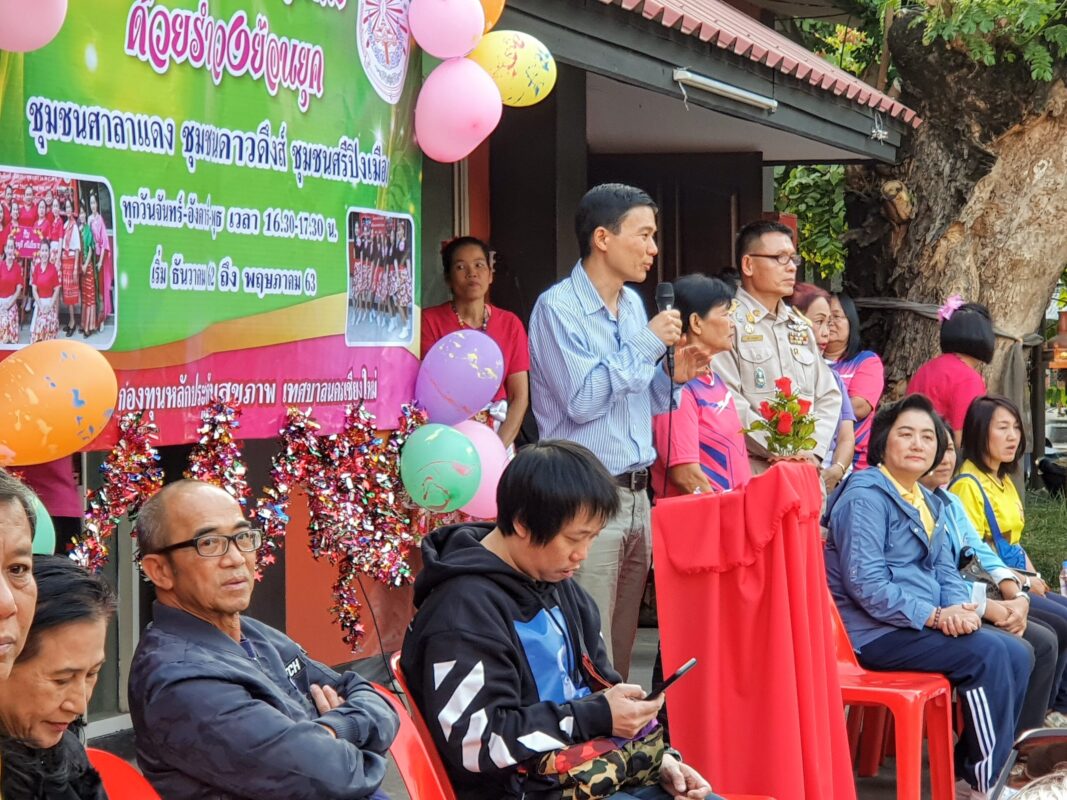
A municipal mayor gives a speech to open a group exercise project organized by the municipality and senior citizen network. Image supplied by the author.
Lastly, this report examines the valuable role played by municipalities in mounting an effective response to COVID-19 within their respective jurisdictions—using their strong political networks to disseminate health expertise. Among the measure introduced are those mandating home quarantine, temperature assessment in crowded areas, handing out face masks and alcohol gel, and teaching the public how to make personal protective equipment. Even with the suspension of local elections by the NCPO, local politicians commonly persisted in trying to perform their duties as best as possible—hoping, of course, to enhance their political prospects once elections resume (as they finally were: for the provincial-level LAOs in late 2020 and at the municipal level in April 2021). The creative health measures put in place at the local level represented a major contrast with the central government, which generally did not respond effectively to the pandemic as they centralised the decision-making process and used emergency decrees to control information.
This strong health response at the local level, responding to the immediate needs of the people, helped to keep alive the strong linkages between the LAOs and the people. For those wanting to see the restoration of democracy in Thailand, the recent local elections represent a potential source of light at the end of the tunnel.
 Facebook
Facebook  Twitter
Twitter  Soundcloud
Soundcloud  Youtube
Youtube  Rss
Rss 